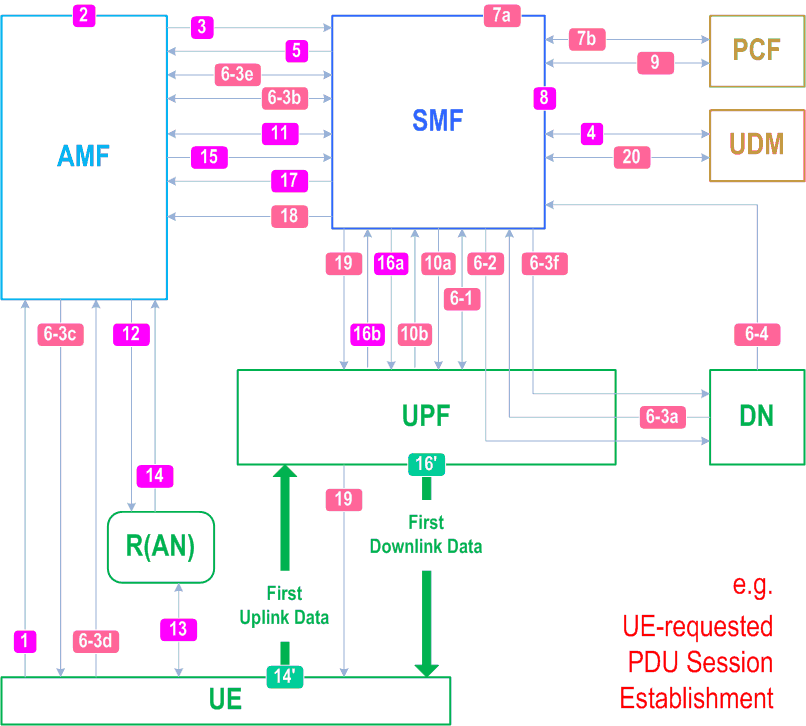TS 23.502
Procedures for the 5G System
V19.0.0 (Wzip)
2024/06 932 p.
V18.6.0 (PDF)
2024/06 932 p.
V17.12.0
2024/03 755 p.
V16.19.0
2024/03 619 p.
V15.17.0
2023/09 367 p.
- Rapporteur:
- Mr. Hedman, Peter
Ericsson LM

essential Table of Contents for TS 23.502 Word version: 19.0.0
each title, in the "available" or "not available yet" area, links to the equivalent title in the CONTENT
editorial Errors in TS 23.502 Word version: 19.0.0
bad references are displayed in this form, followed by the correction
bad references for which a correction was not found are displayed in this form
bad references for which a correction was not found are displayed in this form
- Bad reference in clause 4.8.1.2
-
clause 4.3.17.9Service Gap control is defined in clause 4.3.17.9 of TS 23.401 for EPS, and in clause 5.31.16 of TS 23.501 for 5GS
- Bad reference in clause 4.11.2.4.1
-
clause 5.11.3
- Bad reference in clause 4.13.6.1
-
clause 4.11.1.3.2.6
- Bad references in clause 4.22.9.4
-
clause 5.4.4binstead of:clause 5.4.4b in TS 23.501 [2]clause 5.32.5.3instead of:clause 5.32.5.3 in TS 23.501 [2]
- Bad reference in clause 5.2.8.2.1
-
clause 4.25.5instead of:clause 4.24.5
- Bad reference in clause 5.2.8.2.14
-
clause 4.25.5instead of:clause 4.24.5